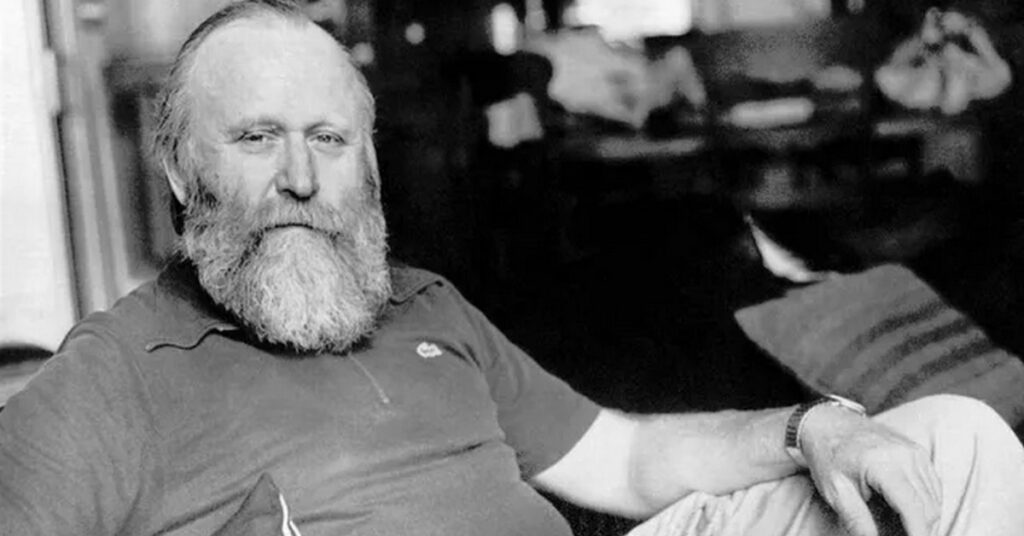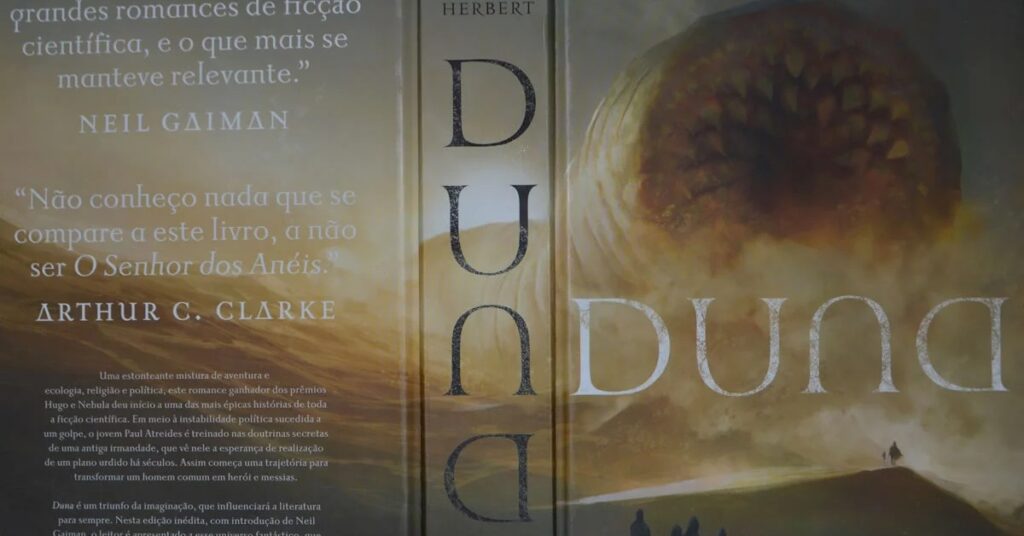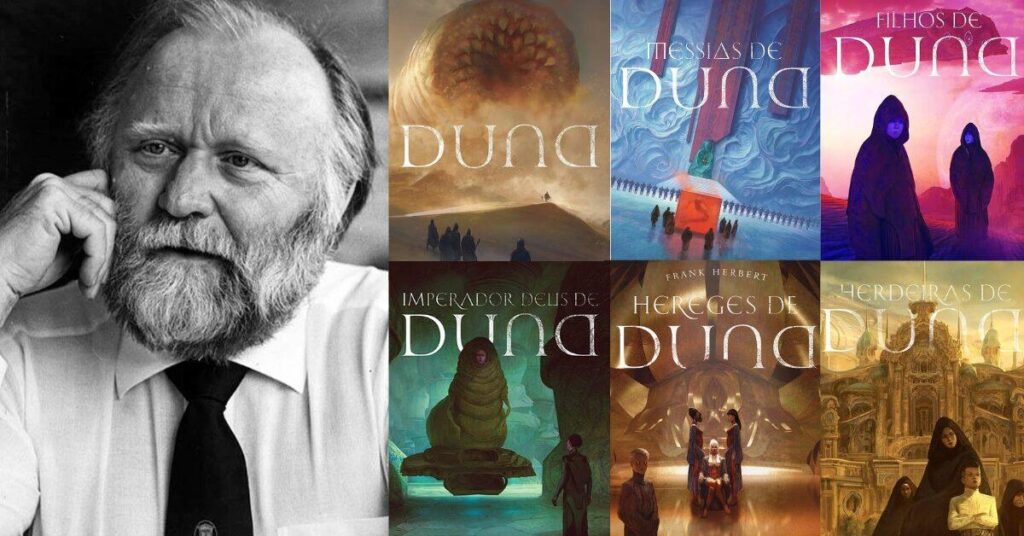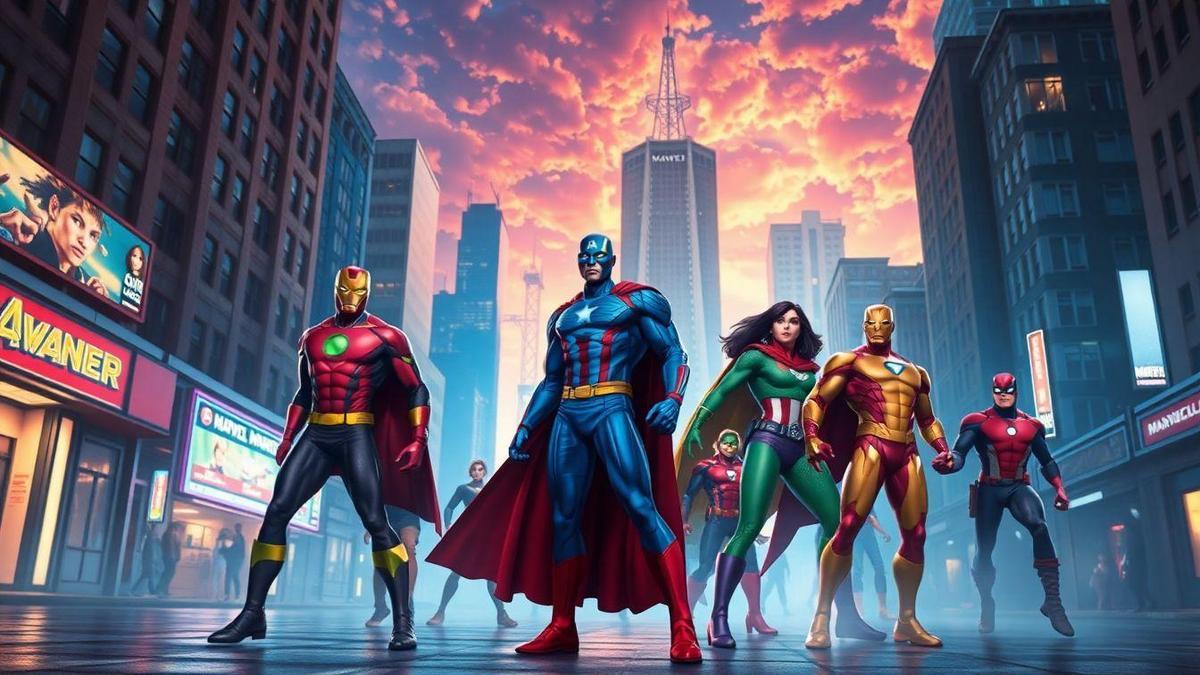The Dune franchise universe has become even more popular in recent years, thanks to the release of the film directed by Denis Villeneuve in 2021. However, what few people know is that both the film and the new series – Dune: The Omen – are adaptations of the literary works of the great writer Frank Herbert. Although the book franchise has more than 20 titles, only 6 were written by the original author, which we will focus on, and today we will teach you the chronological order to read Dune!
Since there are so many books, it is normal for readers to feel confused and not know where to start or which literary path to follow to explore this incredible universe. Therefore, in addition to preparing an article with the order of the books in the Dune series, we will also offer you, the reader, a complete and detailed reading guide to the Dune saga, so that you can make the most of this experience and get to know this incredible world. Come and learn more about the life and work of Frank Herbert!
Frank Herbert – October 8, 1920

Frank Herbert was a writer and journalist who was born on October 8, 1920, in Washington, USA. His career as a writer became widely known thanks to his science fiction series called Dune, which has established itself as one of the most influential and acclaimed of its kind to this day. His inspiration for creating this magnificent universe came from readings on politics, religion, ecology and, of course, the impact of different cultures on the environment.
His career as a journalist also influenced the creation of Dune, as he wrote a report on attempts to cultivate plants in the desert regions of California. The totality of these themes results in the creation of Arrakis, a desert planet in Dune, which serves as the backdrop for a plot that brings together ecological control, politics and religion.
As a result of her remarkable work, Dune received several awards, such as the Hugo Award for best science fiction novel and the Nebula Award, an important science fiction award. The recognition did not come only with the titles, with Dune becoming one of the main influences in the science fiction genre, and so today we will show you the chronological order to read Dune and learn more about this timeless work.
Dune (1965)

Dune, a 1965 book, is the first in chronological order to read Dune and its story takes place on a planet called Arrakis. This planet is the only one in the universe where it is possible to find melange (or spice), which is a substance of great value, capable of prolonging life and also allowing space travel. Thus, we meet the character called Paul Atreides, a young man from a noble house who ends up getting involved, involuntarily, in a dispute for control of Arrakis.
Paul's family is betrayed and attacked, and now the young man must survive while dealing with issues such as revenge and destiny. This young man can change the destiny of the entire empire, as he can play a messianic role capable of changing everything! With this plot, Dune (1965) became a very popular book and was responsible for inspiring several cinematographic works, such as the most recent film (2021), starring Timothée Chalamet.
The book sold more than 20 million copies worldwide and became an international bestseller! Throughout its 412 pages, the plot masterfully and pioneeringly addressed themes such as ecology, religious fanaticism, political control and power dynamics.
Dune Messiah (1969)

Dune Messiah is the second book in the chronological order to read Dune and thus continues the story of Paul Atreides who, at this stage, becomes known as Muad'Dib, the Emperor of the entire universe! However, even having achieved many of his goals, he continues to face internal and external challenges, being trapped in the responsibility of keeping his Empire standing, while struggling with the moral dilemmas of his actions and decisions.
Religion takes center stage in this sequel, as it was religion that transformed Paul into a messianic figure for the masses. Thus, we are presented with a narrative that explores the consequences of the protagonist's rise, as he tries to maintain stability and peace in his reign. Political control and religious faith intertwine while philosophical questions are deeply debated.
Although it did not have the same sales impact as its predecessor, Dune Messiah repeated the feat of being considered a classic of the genre and sold millions of copies around the world. Its 256 pages delve even deeper into the philosophical and political issues that Dune (1965) brought, showing how achieving power can have a high cost.
Children of Dune (1976)

Children of Dune, a 1976 book, is the third in the chronological order to read Dune and continues the saga of the Atreides family. In this new book, the story begins years after the events of the second book and revisits the consequences of the reign of Muad'Dib, Paul. With the disappearance of Paul, his twin sons and his wife Chani take over the Empire and are now responsible for controlling everything.
What we follow in this sequence is the internal struggle of Paul's two heirs, who feel the pressure of living in the shadow of the ruler that their father was, while not wanting to follow the same path of fanaticism that ended up leading to destruction. Despite their exceptional abilities, the two sons are often pressured by political factions that want to have control of Arrakis and its greatest wealth: melange.
The third book in the franchise was very well received by critics and the public, becoming yet another literary phenomenon written by Frank Herbert and selling approximately 20 million copies! Its 416 pages expand the mythology of this Dune universe, while exploring the uncertain future of Paul Atreides' children.
God Emperor of Dune (1981)

Continuing the chronological order to read Dune, we have the book God Emperor of Dune, from 1981. This is the fourth book in the franchise and its story takes place thousands of years after the events of the third book. Now, the story follows Leto II Atreide, Paul's son, who became a mythical character in this universe and went through numerous drastic transformations that transformed him into the supreme ruler of the Empire!
By merging with the sandworms of Arrakis, he became an entity with godlike powers, longevity and unparalleled strength. However, the main consequence is that he has lost his humanity in some aspects and firmly rules a regime that imposes absolute control over the galaxy. All of this raises, once again, philosophical and existential questions in the narrative, exploring themes such as free will, power and sacrifice.
The 528-page book has sold approximately 20 million copies globally and explores the themes of absolute power, immortality, the price of control and the implications of leadership that sacrifices individual freedom in the name of a “greater good”.
Heretics of Dune (1984)

The Heretics of Dune is the fifth book in the chronological order to read Dune and its story takes place 1,500 years after the events of the fourth book. The Empire of Leto II came to an end and the entire galaxy went through a period of great transformations, causing the world we know in Dune to be divided into several factions that fight for power, in the search to take control of the destiny of humanity.
Here, we delve deeper into the Bene Gesserit Brotherhood, one of the main forces presented in the book, but which ended up being weakened when Leto II and his Empire fell. This brotherhood still holds certain political powers and manages to maintain social and religious manipulation, and it is in this environment that we meet the character Duncan Idaho and the character Sheeana. The narrative follows these characters as they all seek to control possession of the melange.
Another success with 20 million copies sold, The Heretics of Dune has established itself among fans and its 528 pages explore the change of eras in the universe created by Frank Herbert. New characters appear, factions gain strength and serious dilemmas arise in this fifth book, due to the fall of Leto II.
The Dune Heirs (1985)

The Heirs of Dune is the last book in the chronological order to read Dune, released in 1985 and the last written by Frank Herbert. The sixth book continues the story of the fifth, where the factions continue to fight for control of the universe and the spotlight is on the Bene Gesserit Brotherhood, which has become one of the protagonists of the story. After the events of the previous book, the Brotherhood seeks to rebuild its power and influence.
The plot follows Mother Superior Darwi Odrade, who leads the Brotherhood and seeks to establish its strength and face the growing threats from enemy factions, such as the Honored Matres, a group that emerged after the fall of Leto II. The dispute between these two factions is the central focus of the book and brings debates about genetic manipulation, power and political intrigues that define the fate of thousands of innocents.
The last book in the franchise Frank Herbert sold more than 20 million copies and maintained the high level of popularity that the entire saga had built, being considered by many as the perfect ending to the plot. With around 464 pages, the conclusion of the saga explores the consequences of the cycle of domination, resistance and the clashes between factions, in addition to delving into themes of power, social control and the eternal conflict between freedom and oppression.
Conclusion

This is the chronological order to read Dune correctly, taking into account the six books written by the original author, Frank Herbert. However, it is important to note that the franchise gained a long sequence of parallel sequels, written by Frank's son, Brian Herbert. After his father's death in 1986, he collaborated with author Kevin J. Anderson to continue the Dune series, writing several prequels and sequels based on notes left by Frank Herbert.
And that's our complete guide to the chronological order for reading Dune, and if you like this type of content, be sure to also check out our articles on how to watch Planet of the Apes in chronological order e what is the order of the After films to watch correctly.






